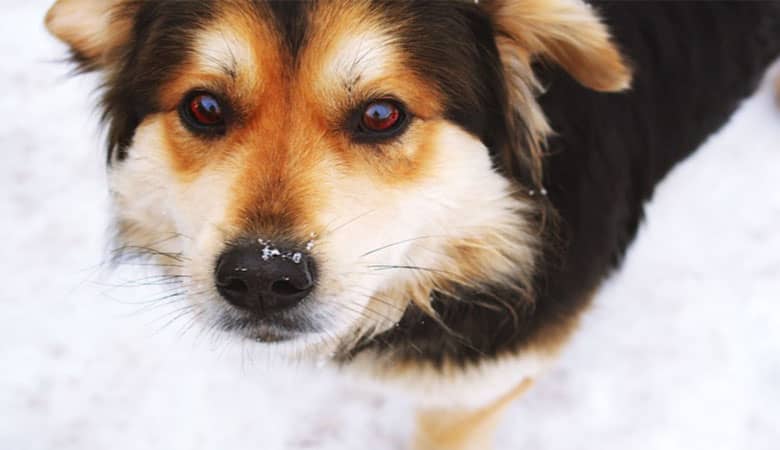From providing unconditional love and being a great source of comfort to being just plain fun to have around, dogs enrich our lives in a hundred different ways. Taking care of your dogs or puppies is essential. A commitment that you make for life, and a major part of that is making sure that they’re happy and healthy. Proper grooming and proper nutrition are essential for keeping your dog’s fur healthy and shiny.
When it comes to maintaining the health of your dog’s fur, there are a few things you need to do. Dogs have different types of fur, so the care routine will vary depending on the type of fur your dog has. However, we do have some general guidelines to help keep your dog’s fur healthy.
How to Keep Your Dog’s Fur Healthy and Shiny
-
Be careful with ingredients
Take a look at the ingredients list on any food or grooming products that you buy for your pup. Make sure they are all natural, without harsh chemicals or dyes. There are some great natural products available that can help keep your pup’s coat clean and healthy without irritating their skin.
-
Regular brushing
Regular brushing helps to remove any dirt, debris or mats from your dog’s fur and keeps it looking clean and healthy. Depending on the breed of dog, you may need to brush their coat every day or every few days. If you have a long-haired breed like an Afghan Hound, daily brushing is necessary to avoid matting and tangles. For short-haired breeds, brushing once or twice per week should suffice. As you brush, check for any bumps or lumps that should be brought to your vet’s attention.
-
Baths are a must
Just as humans need regular baths in order to stay clean and healthy, so do our canine friends! You should bathe your dog at least once every two months (or more often if needed) with a shampoo specifically formulated for dogs. Be sure not to use human shampoo as this could strip away important oils from their coat which can lead to dryness and irritation. A conditioner can also be used if your dog has long hair. After bathing, you should also make sure your dog’s is thoroughly dried off before allowing them back outside or in contact with furniture and rugs, as moisture can lead to bacterial growth which causes skin problems such as infections or hot spots.
-
Feed them a healthy diet
A healthy diet is essential for maintaining a glossy fur coat on your dog. Feeding them high quality food that is rich in protein will help keep their coats looking shiny and soft while giving them all the nutrients they need for proper growth. Different breeds can require different macronutrient ratios, so try to get something formulated specifically for your dog’s needs. If necessary, you can ask for advice from your vet about recommended dog food brands.
-
Add supplements if necessary
Some supplements such as fish oil capsules, vitamin E tablets, or coconut oil help provide extra nutrients that can contribute to a healthier coat in addition to providing general benefits like improved joint health or immune system support. Talk with your vet before starting any new supplement regimen as some supplements may interact negatively with certain medications or underlying conditions. Some common supplements include:
- Fish oil
- Glucosamine
- Multivitamins
- Probiotics
- Prenatal vitamins
Be sure to use dog-specific supplements, as supplements for humans may have ingredients that are toxic to dogs, such as Xylitol.
-
Have the right grooming supplies
Keep the essential grooming supplies on hand, such as combs or brushes made specifically for dogs (as well as ones suited for different types of coats), nail clippers (to avoid overgrowth) and ear cleaners (to remove wax build-up). This will allow you to groom your pup whenever necessary without having to run out for supplies each time. A short regular grooming session every week is much easier on both you and your dog than a long session every couple of months.
-
Get regular check-ups
Make sure that you take your dog in for regular check-ups at the vet’s office so that any medical issues related to their fur or skin can be addressed right away. Your vet will be able to determine if there are any infections, sores or lesions that are indicative of an underlying health problem that can affect your dog’s fur. These regular check-ups are a crucial part of owning a dog, and can help you save money down the line.
-
Keep up with flea and tick prevention
Your dog’s fur can only be as healthy as the skin underneath. Parasites such as fleas and ticks can lead to skin irritation which causes itching and scratching. This can lead to further damage and inflammation so make sure you stay up-to-date on preventative measures such as spot-on treatments, collars, and shampoos. Talk with your vet about what’s best for your pet based on your lifestyle and where you live.
Following these simple steps should help keep your dog’s fur looking its best. However, it’s best to remember that every dog is different. Seek advice from your vet or a professional groomer if needed – they’ll be able assess what would work best given the breed and others factors involved.

